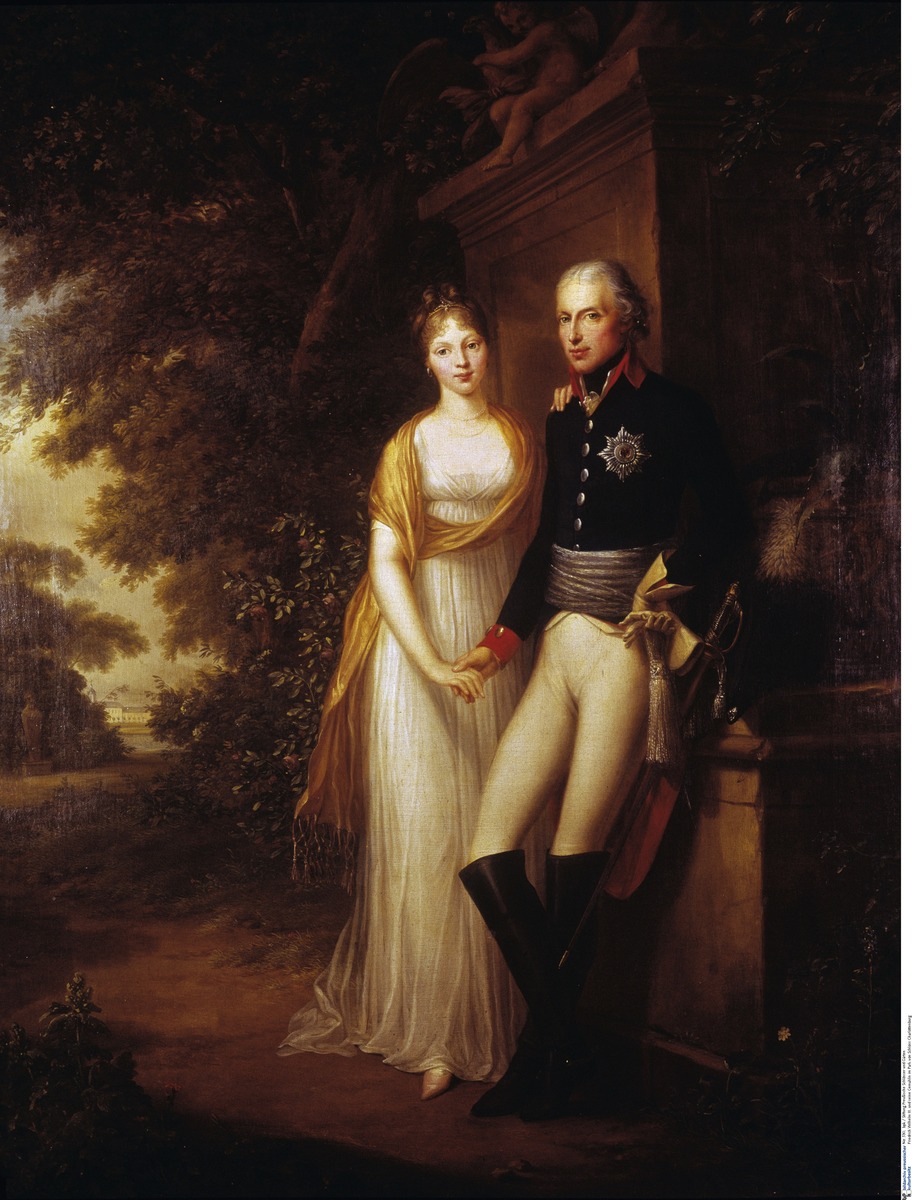Abstract
In 1793, Princess Louise of Mecklenburg-Strelitz (1776-1810) married
the Prussian crown prince and future king, Frederick William III (r.
1797-1840). Following Prussia’s disastrous defeat by Napoleon at the
battles of Jena and Auerstedt in 1806, she and her family fled to East
Prussia. From there, Louise made personal appeals to the French emperor
in an attempt to soften the consequences of the Prussian defeat.
Napoleon’s correspondence with his wife, Josephine, suggests that he
found the Prussian queen perfectly charming, but her efforts left him
unmoved.
The Peace of Tilsit (1807) ultimately stipulated losses amounting to
nearly half of Prussia’s territory (including land annexed in the final
two partitions of Poland). Louise’s patriotic efforts and her
unpretentious charm brought her soaring popularity. She was the first
female member of Germany’s ruling class to become an object of
nationalist enthusiasm, albeit of the monarchist variety. This painting
shows Louise and Frederick William III in the park of Charlottenburg
Palace in Berlin. Louise is dressed in an Empire-style gown; the
couple’s casual pose is suggestive of domestic tranquility.
